Instructional Series
This site will be closing soon as its content has moved to Tāhūrangi.
2024 titles are available on Tāhūrangi. Use the filters to find specific series.
Find Literacy resources at Tāhūrangi - Literacy.
Welcome to the English medium literacy instructional series teaching and learning resources for years 1 to 8.
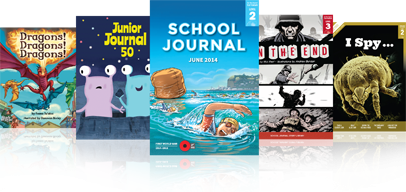
- Gold
- Purple
- Blue
- Red
- Green
- Yellow
- Orange
- Turquoise
- Magenta
- 2
- 3
- 4
- 1
- 4
- 6
- 5
- 3
- 8
- 7
- 2
- 1
- English
- Social Sciences
- Science
- Health and Physical Education
- Technology
- The Arts
- Mathematics and Statistics
- Learning Languages
- Fiction
- Non-fiction
- None
- Nature of science
- Living world
- Nature of technology
- Statistics
- Geometry and Measurement
- Planet Earth and beyond
- Technological knowledge
- Physical world
- Material world
- Number and Algebra
- Technological practice
- Gather and interpret data
- Use evidence
- Critique evidence
- Engage with science
- Interpret representations
- Articles
- Stories
- Poems
- Plays
- Activity
- Comic
- Kākano | Seed
- Tupu | Seedling
- Māhuri | Sapling
- Rākau | Tree
- Consonant digraphs
- Consonant patterns
- Initial and final blends
- Long vowels
- Short vowels
- Single consonants
- Complex morphemes
- Tense
- Vowel digraphs
- Contractions
- Syllable types
Search results
1187 items - Showing 931 - 940
-
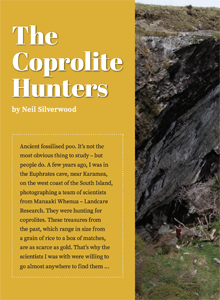
The Coprolite Hunters
by Neil Silverwood
Photographer Neil Silverwood has documented the work of New Zealand scientists before. This time, they’re hunting for coprolites – fossilised animal faeces. Analysing this “treasure from the past” allows scientists to learn more about our endangered native bird species, including the kinds of habitats that once supported them. This is another useful article about the work scientists do and the many ways in which they continue to learn about our world.
-
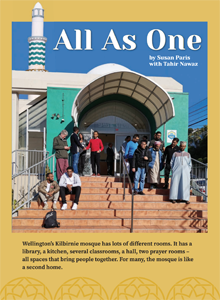
All As One
by Susan Paris with Tahir Nawaz
While Muslims account for a small percentage of New Zealand’s population, their community has had a high profile in recent years. This article provides a brief introduction to the community’s values, as seen through the eyes of four people involved with the Kilbirnie and Hāwera mosques.
-
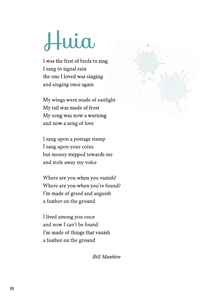
Huia
by Bill Manhire, illustration by Rachel Walker
This item complements the article about coprolites in the same Journal, providing a more emotive response to the idea that extinction is permanent – and often caused by the actions of people. The poem might be called a mōteatea – a lament.
-
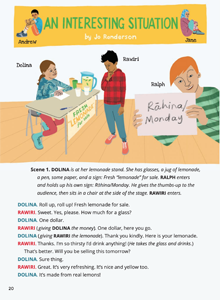
An Interesting Situation
by Jo Randerson, illustration by Ali Teo
This play links to the concept of financial capability learning. Jo Randerson has created a situation that is humorous and relatable, with a clear context that allows for a careful explanation of credit and interest – and a great twist at the end.
-
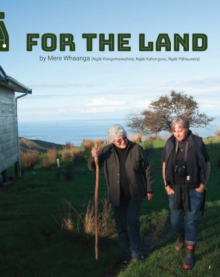
Rongoā for the Land
by Mere Whaanga
Restoring the whenua on the Māhia Peninsula
Taipōrutu is a sheep and cattle farm on the Māhia Peninsula. The land has been in the same whānau for twenty generations. It was once covered in native bush: tī kōuka, mānuka, rewarewa, tītoki, kahikatea, nīkau, and kawakawa. These species ensured the health of the land and the health of its people – but then they were cleared for farming. A few years ago, the family who owns Taipōrutu came up with a plan to restore their whenua. They called the plan Ahikāroa.
-
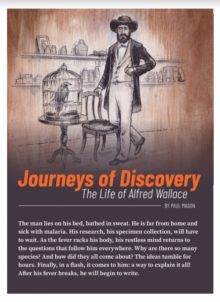
Journeys of Discovery: The Life of Alfred Wallace
by Paul Mason
illustrations by Gavin Mouldey
The naturalist Alfred Wallace and his close association with the theory of evolution is little known – most people think of Charles Darwin. Yet Wallace’s story is a classic one of adventure, talent, and persistence before he was able to offer one of the most ground-breaking scientific theories of all time. Most readers are exposed to the work of scientists in the present day; the nineteenth-century setting of this text is an excellent way to broaden their understanding of how scientists have increased their understanding of the world over time and the major milestones along the way. This article is designed to be read alongside the fictional story “Dodinga, 1858”, written by the same author.
-
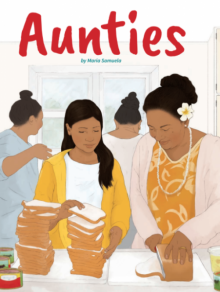
Aunties
by Maria Samuela
illustrations by Leilani Isara
Maria Samuela’s affecting story chronicles the week leading up to the narrator’s mother’s funeral, with all its sadness and confusion and overwhelming sense of loss. The story’s one light is the presence of the narrator’s extended family – and the sense that her many aunties will continue to be there in the future, providing the kind of support and love that usually comes from a mother. The text includes references to a girl’s first period.
-
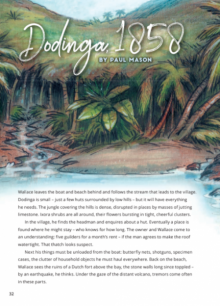
Dodinga, 1858
by Paul Mason
illustrations by Gavin Mouldey
A historical narrative that is a companion story to the related article “Journeys of Discovery: The Life of Alfred Wallace” – this story provides some detail about the experiences the famous amateur naturalist Alfred Wallace had while travelling in far-flung places of the globe, hoping to crack the mysteries of evolution. Dodinga is the Indonesian village where Wallace was staying when he had his famous breakthrough in 1858. An author’s note describes the story’s links to actual events.
-
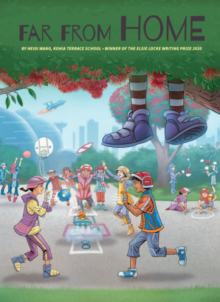
Far from Home
by Heidi Wang
2020 Winner of the Elsie Locke writing prize
illustrations by Andrew Burdan
-
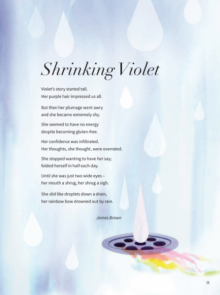
Shrinking Violet
by James Brown
illustration by Sarah Wilkins
This sophisticated poem plays with the natural tension created when a poem’s form doesn’t seem to match the content. James Brown’s jaunty use of structure and rhythm challenges the reader to understand both what the poem is about and why the author made the decisions he made.


 Literacy Online home
Literacy Online home
